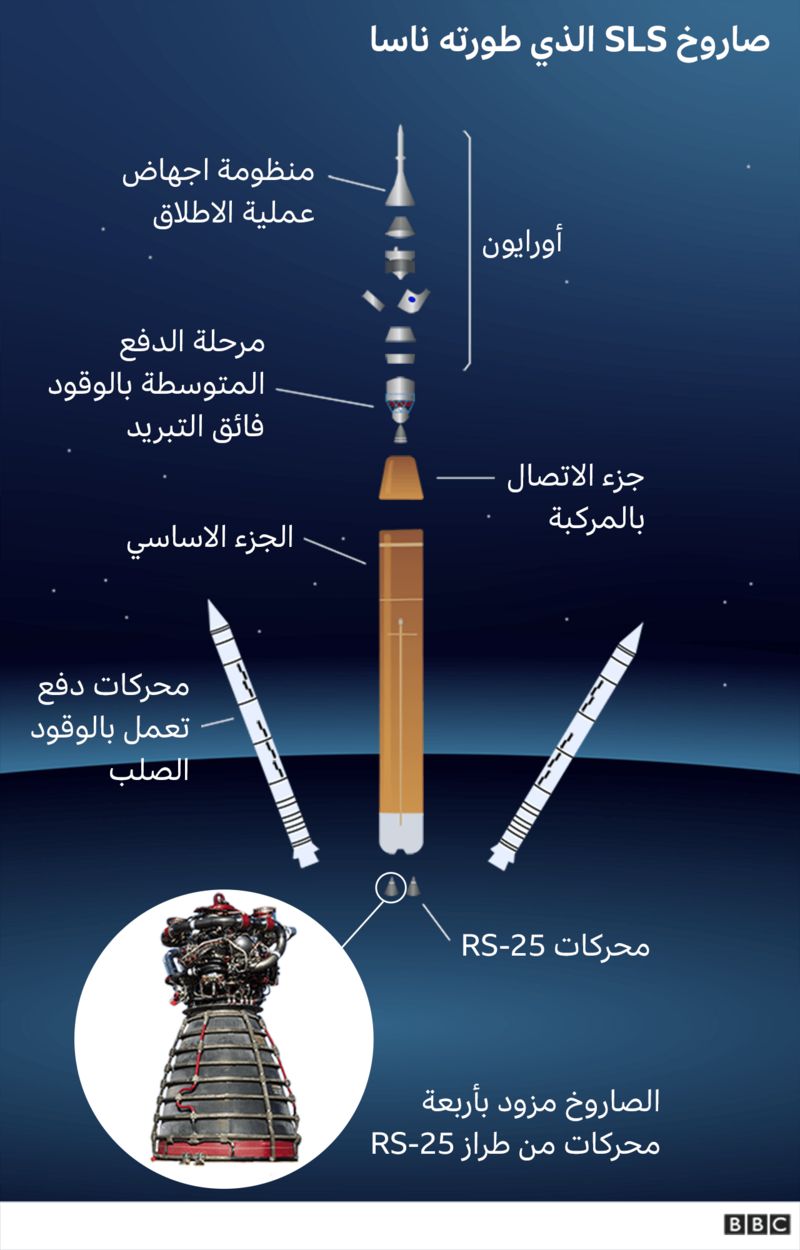Lunar Exploration: All You Need To Know about the giant NASA rocket that will transport astronauts to the moon
NASA has begun assembling the first spacecraft propulsion rockets (SLS) on the launch pad in preparation for the first flight next year.
The SLS spacecraft is a giant multi-stage rocket that will carry American astronauts to the moon, and the first manned flight as part of this program is scheduled to take place in 2024.
Florida engineers have begun assembling the parts that make up the propellant rocket.
The missile is scheduled to be launched for the first time in November 2021.
The spacecraft consisted of a gigantic 65-meter-long basic structure equipped with four engines with solid fuel tanks. Together, these engines produce 8.8 million pounds (39.1 megatons) of thrust that can take astronauts into orbit, and then propel the craft toward the moon.
Teams from Kennedy Space Center in Florida installed the first parts of the propulsion missile on a mobile launch pad on November 21. This operation takes place inside the center's famous vehicle assembly building.
The two rocket propulsion engines consume six tons of solid aluminum fuel per second with the launch of the missile and will provide 75% of the vehicle's thrust upon takeoff.
The movable take-off platform on which the propulsion missile is installed is a 115-meter-long structure used to assemble the missile before it is transported to the launch pad.
This development represents a huge step not only for the spacecraft that has been in development for ten years, but also for NASA's plan, known as Artemis, to send another astronaut and the first female astronaut to the surface of the Moon by 2024.
"The installation of the first part of the spacecraft on a mobile launch pad represents a huge event for the Artemis program. It shows that the mission is already taking shape and that it will soon move to the launch pad," said Andrew Schrobl, a director at Jacobs engineering company that works for NASA.
One of the spacecraft's largest components - the orange-clad foam body - is currently undergoing a program of testing at the Staines Space Center in Mississippi.
The last two tests are scheduled to take place during the next few weeks, during which the missile body will be filled with fuel and its four engines will be launched after two weeks in a simulation of the launch and ascent process.
Once complete, the spacecraft will be longer than the Statue of Liberty, and its maximum thrust will increase by 15% than the Saturn 5 rocket used to launch the Apollo Moon spacecraft in the 1960s and 1970s.
The propulsion rocket being assembled in Florida will launch the new generation of NASA spacecraft "Orion" in a lunar orbit in November of next year.
The Orion will not carry a crew on this flight, known as Artemis-1. Rather, it will set out to test the vehicle's performance before allowing the presence of humans on board for the Artemis-2 mission, which is set to be launched in 2023.
Then Artemis-3 follows, the first manned landing on the Moon since the Apollo 17 flight in 1972.
BBC




